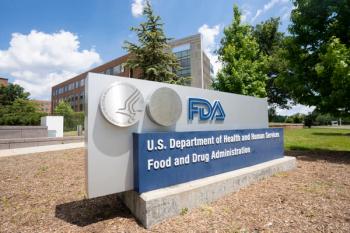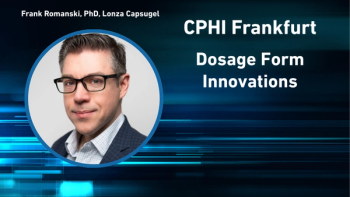
Pharmaceutical Technology Europe
- Pharmaceutical Technology Europe-06-01-2009
- Volume 0
- Issue 0
New expression systems create opportunities for innovators, CMOs and product developers
There may well be a pending revolution in biopharmaceutical expression systems. Nearly 50% of biomanufacturers today are demanding a whole lot more from their primary expression systems than they have during the past 30 years.
There may well be a pending revolution in biopharmaceutical expression systems. Nearly 50% of biomanufacturers today are demanding a whole lot more from their primary expression systems than they have during the past 30 years.1 Although there have been substantial improvements in classic expression systems with the years, there has been a general lack of interest in adopting newer platform technologies. The result is that nearly all biotherapeutic products manufactured today use much the same old, familiar technologies — Esherichia coli, Chinese hamster ovary and the yeast Saccharomyces cerevisiae.
IMAGEWERKS/GETTY IMAGES
Biopharmaceutical industry in limbo
The need for innovation in the biopharmaceutical sector has a greater urgency than ever before. Our new report, Biopharmaceutical Expression Systems: Current and Future Manufacturing Platforms, explains that biopharmaceutical companies are only now beginning to address strategic innovation at the outset of their drug development processes. This is a recent shift, despite the fact that a range of promising technologies have been made available for some years.2 Even now, many companies continue to rely on outdated expression systems, which may compound the risks inherent in new drug development. This lack of forward thinking risks hampering companies all the way through R&D and is having a stifling effect on biopharmaceutical manufacturing.2 In this increasingly competitive environment, companies are recognizing that they cannot afford to continue along this path.
A decade of decline
As far back as 2001, it was suggested that, for the industry to maintain even a modest growth rate, companies would need to triple the number of new molecular entities (NMEs) launched annually.3 Judging by media releases from the top 10 companies around this time period, such targets appeared eminently achievable,4–5 but these public statements, however, were often designed to impress the financial sector and meet shareholder expectations. Between 1990 and 2000, pharmaceutical earnings per share increased by an average of 12%,3 but yearonyear, new drug output has continued to decline, despite continuing unmet medical needs.
Major companies have often publicized their commitment to innovation by highlighting their heavy investment in R&D, but there are several instances of major companies having struggled to even launch one NME in a given year. In contrast, much smaller biotech firms have frequently outperformed their larger counterparts. Financial analyses show that the global pharmaceutical industry is currently investing twice as much in R&D as it was 10 years ago to generate twofifths of the medicines it previously produced.6 Many are now challenging the accepted wisdom that increasing R&D investment will automatically generate NMEs. This new view includes evaluating novel expression systems.
Innovation requires early commitment
Our recent expression systems study shows that, despite the difficulties some companies are facing, there are substantial opportunities.2 At present, too many companies have held on to outdated technologies for commercialscale manufacturing of biopharmaceutical products, and nearly all current products are being produced using E.coli, CHO cells and Saccharomyces as hosts. In effect, the biopharmaceutical sector is relying on technologies that were invented in the early 1970s and commercialized in the 1980s.
Many have shown reluctance to innovate. Many new platforms exist featuring new host cells and organisms, but many managers in biopharmaceutical companies appear to have overlooked their sophistication and increasing availability.2 Of course, regulatory factors play a major role here, as do issues surrounding intellectual property (but as many as 50% of biomanufacturers have indicated they would be willing to pay royalties for improved yield, for example).1
Time for change
It's not only manufacturing improvements that are driving the shifts toward new expression systems; many in the industry have seen trends toward the use of R&D strategies to improve a biopharmaceutical's clinical performance. For example, Patrick Lucy, Global Business Development Leader at Dowpharma's Pfenex business, feels that expression system platforms play a part in clinical strategy. He believes that the use of new prokaryotic expression platforms will increase because of their short cycle time in the fermenter and ease of genetic manipulation. Lucy feels that biomanufacturers will shift for many reasons, one of which is that many companies have failed products on the shelves that "could and should be made more efficiently, and to higher clinical standards in newer expression systems."
Indeed, interest in new biopharmaceutical mammalian expression systems appears to be growing rapidly. Andrew Sandford, Vice President at Selexis (Switzerland), an expression systems platform company, has noted this change. "Already, we have more than doubled the number of companies that have begun to actively change the way they plan their early development and manufacturing strategy," he said. "Many are starting process development 4–6 months earlier."
An analysis of the trends during the past decade reveals a decline in biopharmaceutical innovation. Oddly enough, in some cases, this is not because of a lack of new technologies; rather, it is a failure to adopt these technologies and recognize the potential for future advancements and opportunity. Companies today are realizing that they cannot continue with the status quo and are being forced to make bolder choices. In biopharmaceutical manufacturing, the technologies needed to make improvements exist, and the benefits they can bring have been identified and documented.2 Given that these advantages include improved product yield, enhanced product quality, and lower operating and infrastructure costs, there can be no arguments about seizing such opportunities. In addition, these technologies can be applied to make products truly unique (difficult or impossible to copy), which should satisfy even the most stringent assessment of innovation.
Eric Langer is President and Managing Partner BioPlan Associates, Inc. Rockville, MD,USA.
Tel. +1 301 921 5979
References
1. Sixth Annual Report and Survey of Biopharmaceutical Manufacturing, 2008–2009, preliminary data (BioPlan Associates, Inc., Rockville, MD, USA, 2009).
2. R. Rader, Biopharmaceutical Expression Systems and Genetic Engineering Technologies (BioPlan Associates, Inc., Rockville, MD, USA, 2008).
3. F. Kermani and G. Findlay, The Application of Drug Delivery Systems (Centre for Medicines Research International, 2000).
4. Pfizer, "Pfizer Expects to Launch Three New Drugs in 1998, Company Tells Wall Street" (October 1998).
5. AstraZeneca, "AstraZeneca Progresses Key Products And Aims To Double Product Portfolio Value Every Five Years" (December 1999).
6. CMR International, "The CMR International 2007 Pharmaceutical R&D Factbook" (2007).
7. This article was first published in the March 2009 issue of BioPharm International.
Articles in this issue
over 16 years ago
Where have we reached with REACH?over 16 years ago
Newsover 16 years ago
Improving liposome integrity and easing bottlenecks to productionover 16 years ago
Substandard APIs: we must tackle the problem togetherover 16 years ago
The R&D hurdles for neglected diseasesover 16 years ago
Taking the modular approachover 16 years ago
Limits to CRO growth?over 16 years ago
Why we need mass serialization — now!over 18 years ago
Fighting Protein misfolding diseasesNewsletter
Get the essential updates shaping the future of pharma manufacturing and compliance—subscribe today to Pharmaceutical Technology and never miss a breakthrough.




